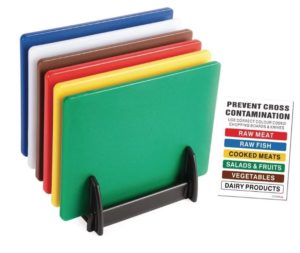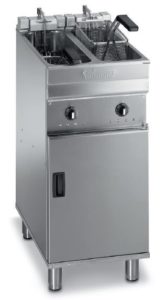
On the 17th of July 2016, Natasha Ednan-Laperouse, 15, died after suffering a severe allergic reaction on board a flight to Nice.
Natasha, who was extremely allergic to sesame seeds, had bought an artichoke, olive and tapenade baguette from the Pret A Manger store at Heathrow Airport. The baguette had the seeds baked into its dough but did not carry any allergen advice because, as it was made in-store, it was not required by law.
Following a five-day inquest, the coroner, Dr Séan Cummings, criticised the chain for not taking allergen monitoring seriously. The inquest found that Pret had already been warned about allergic reactions to their baguettes six times before Natasha’s death. Amy Mills, a 37-year-old bank clerk, had been hospitalised two years earlier after eating a cheese, tomato and basil sandwich from a store in West London. Pret a Manger has since announced a planned introduction of full ingredient labelling across its stores.
In the UK there are approximately 4,500 hospital admissions each year from food allergies. Data highlighted by the Food Standards Agency (FSA) also shows that children are disproportionately more likely to die from a reaction than adults.
Currently, food businesses are only obligated to tell their customers if they use any of the 14 most common allergens. These are:

- Cereals containing gluten—namely wheat, barley, rye, and oats
- Eggs
- Fish
- Crustaceans—including prawns, crabs, and lobsters
- Celery
- Molluscs—such as mussels and oysters
- Peanuts
- Mustard
- Milk
- Lupin
- Soybeans
- Tree nuts—such as walnuts, macadamia nuts, hazelnuts and almonds
- Sulphur dioxide and sulphites—when above 10mg/kg
- Sesame
For pre-packaged food and drink the 14 allergens must be emphasised within the ingredients list. Restaurants selling unwrapped food must also provide full allergen information in writing, either on the menu or through a notice explaining how customers can access this information.
To be able to do this, businesses need to work with their supply chain to ensure they have the most recent information about the ingredients which go into their products. In some circumstances, this will be easier said than done but all ingredient substitutions containing new allergens must be documented and provided to the customer. Businesses which don’t follow allergen information regulations are liable to receive significant fines.

Cross Contamination and Food Allergies
For smaller businesses and suppliers, cross-contamination can be a huge issue. If someone has a severe allergy, they can react to even the smallest amount of the food they’re sensitive too. If you’re not completely confident that your suppliers can avoid cross-contamination never advertise your food as allergen-free. Instead, this food should carry precautionary allergen labelling, warning customers that it could contain trace amounts of a common allergen.
Of course, cross-contamination can also occur in the kitchen and while the law doesn’t provide any clear guidelines, enforcement officers will expect to see best practice methods implemented in order to prevent it. The FSA recommends storing ingredients that may contain allergens separately, in closed labelled containers and having separate work surfaces, chopping boards and utensils for free-from foods.
The use of colour-coded equipment, which is used to help staff quickly identify what equipment should be used for a specific food group, are now widely used in commercial kitchens to prevent cross-contamination.

Keep in mind that fried foods are also a common source of cross-contamination. You cannot, for instance, fry gluten-free chips in the same oil as battered fish. Consider investing in twin-tank fryers and reserving one of the tanks for allergen-free foods.
However, all these precautions are meaningless if staff are not adequately trained. The Food Information for Consumers Regulation 2014 requires all employees to know if the food they’re serving contains any of the 14 named allergens. Staff should be able to handle all allergen information requests and the information they provide must be accurate, consistent and up-to-date. The FSA provides free food allergy online training courses where you and your staff can learn more about the allergen information rules.
Since Natasha’s death, the government has announced a major shake-up in food safety regulations, including a new law to protect the UK’s two million food allergy sufferers. Under “Natasha’s Law”, all pre-packaged foods will need to carry a full list of ingredients. The law, which will apply in England, Wales and Northern Ireland, will come into force by 2021.
While the new policy would doubtless improve customers’ trust in the food they are eating, there are concerns that it will introduce the risk of mislabelling, especially in busier kitchens, and will not circumvent cross-contamination.
Ultimately, while the added emphasis placed on allergen labelling can only be viewed as a positive thing, it cannot come at the expense of best practice. All businesses must be knowledgeable about food allergens and understand the differences between allergies, intolerance, coeliac disease and anaphylaxis. Most importantly they have to be able to communicate this knowledge to the customer and to each other.


